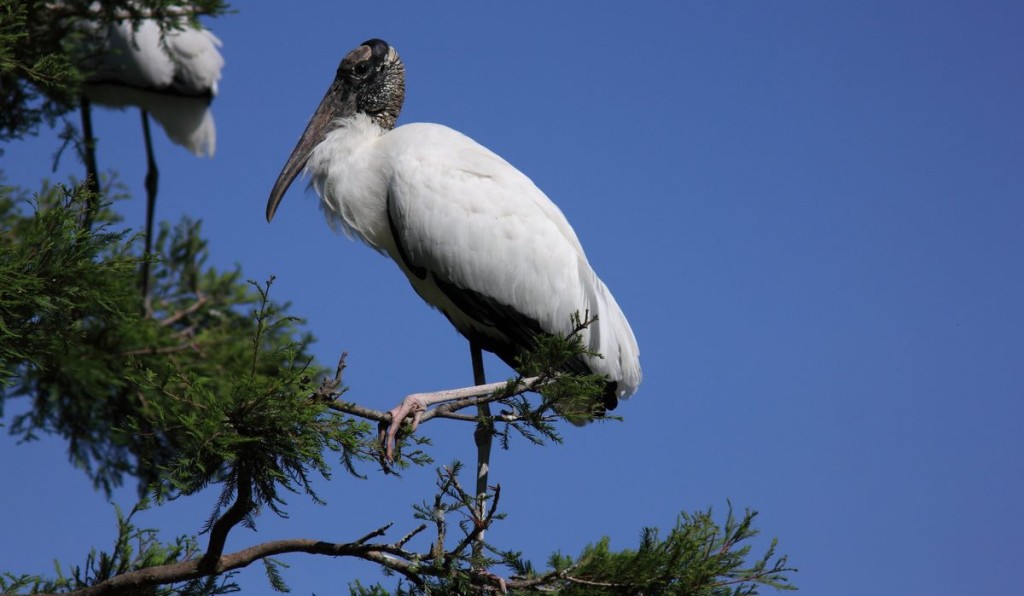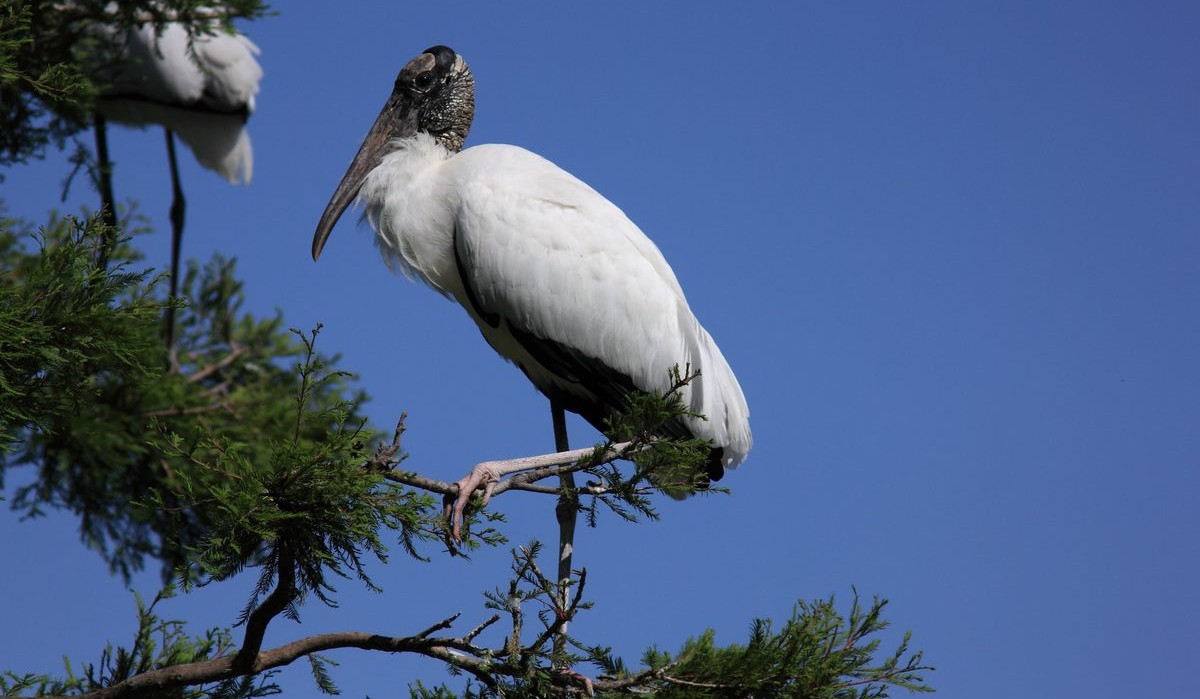
After teetering on the edge of extinction almost 50 years ago, the wood stork is now widespread across the southeastern US, and is preparing a flight off the Endangered Species List (ESL).
It’s all in a day’s work for the ESL, the world’s most successful conservation program in history, and the only stork native to North America is just the most recent beneficiary.
The wood stork faced extinction when listed in 1984 under the Endangered Species Act. The population had decreased from 20,000 nesting pairs to less than 5,000 pairs, primarily nesting in south Florida’s Everglades and Big Cypress ecosystems.
The recovery program worked to restore and protect the ecosystems which the four-and-a-half-foot-tall bird calls home.
Today, the wood stork breeding population has doubled to 10,000 or more nesting pairs and increased its range, including the coastal plains of Mississippi, Alabama, Florida, Georgia, and the Carolinas. These long-legged wading birds more than tripled their number of nesting colonies from 29 to 99 in their expanded range.
US Fish and Wildlife explained they’ve adapted to new nesting areas, moving north into coastal salt marshes, old, flooded rice fields, floodplain forest wetlands, and human-created wetlands.
The Fish and Wildlife Service will take comments on the proposal through April 17th, and even if it is delisted, it would remain a protected species under other legislation such as the Migratory Bird treaty.
MORE ENDANGERED SPECIES NEWS: After Facing Extinction, This Midwestern Bird is Now Soaring Off Endangered Species List
The scale-headed wader, not-so-affectionately-termed a “flinthead,” hunts fish, frogs, and crustaceans in marshes, swamps, and rivers, and is actually listed globally by the IUCN as a species of Least Concern, due to its range extending across almost the entire South American continent east of the Andes.
“The wood stork is recovering as a result of protecting its habitat at a large scale,” said Assistant Secretary for Fish and Wildlife and Parks Shannon Estenoz. “This iconic species has rebounded because dedicated partners in the Southeast have worked tirelessly to restore ecosystems, such as the Everglades, that support it.”
HONK For Joy At This Unique Bird’s Recovery On Social Media…




















